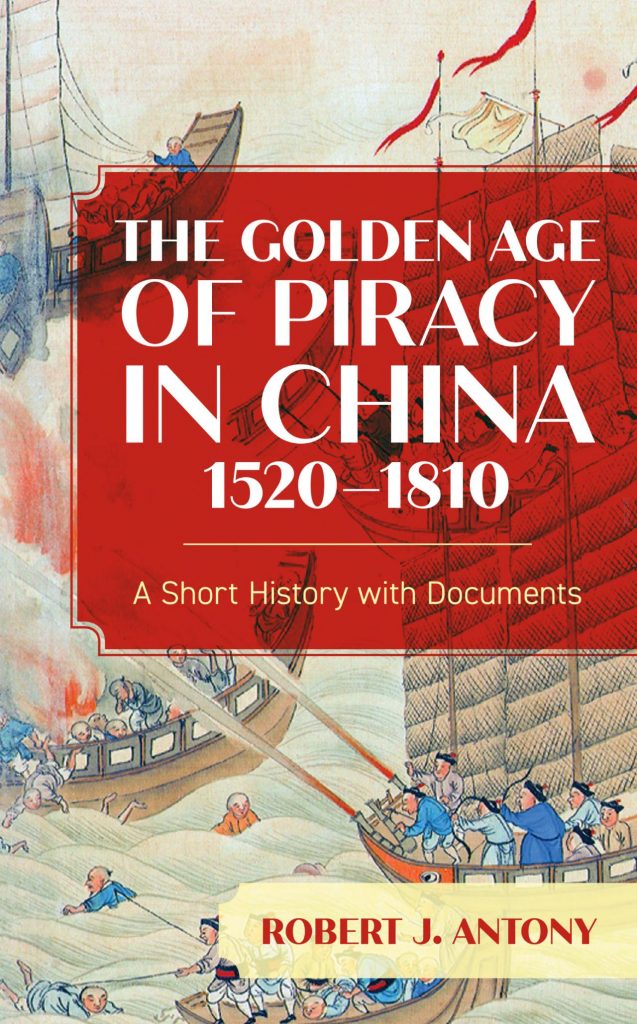The Golden Age of Piracy in China, 1520–1810: A Short History with Documents
Rowman & Littlefield Publishers, 2022
Pages: 180 • Trim: 6 x 9
978-1-5381-6152-4 • Hardback • $79.00
978-1-5381-6153-1 • Paperback • $29.00
978-1-5381-6154-8 • eBook • $27.50 (coming soon)
Subjects: History / Maritime History & Piracy, History / Asia / China, History / Modern / 16th Century
Courses: International & Area Studies; Asian Studies; China; History
About the Author
Before his retirement in 2019, Robert J. Antony 安乐博 was distinguished professor and senior researcher at Guangzhou University. He is currently an adjunct professor at Shandong University and an associate in research at Harvard University’s Fairbank Center. He is the author of Like Froth Floating on the Sea: The World of Pirates and Seafarers in Late Imperial South China, Pirates in the Age of Sail, and Unruly People: Crime, Community, and State in Late Imperial South China.
Review
Everyone knows something about the famous pirates of the Caribbean, but their Chinese counterparts were just as fascinating and far more numerous and powerful. This book, by one of the world’s foremost experts on Chinese piracy, is the best book in print on the topic. It immerses you in the pirates’ bloody and dangerous world— an experience both gripping and informative.
— Tonio Andrade, Emory University
The Golden Age of Piracy in China is the first comprehensive scholarly study of piracy in Chinese waters from the sixteenth to the early nineteenth century. Highly readable and meticulously researched by one of the world’s leading scholars on Chinese maritime history, the book vividly brings to light the hitherto largely untold history of piracy in the East and South China Seas. It is a major contribution to the global and cross-cultural history of piracy, based on an impressive range of primary sources from Chinese, Japanese, and European archives and collections.
— Stefan Eklöf Amirell, Linnaeus University
Robert J. Antony not only succinctly summarizes the history of Asian piracy but also, in forty translated and annotated documents ranging from the early sixteenth century to the early nineteenth century, examines pirate eating habits, marriage, sexual morays, death-by-slicing torture, and even their guaranteed health care plans, with the Guangdong Pirate Pact of 1805 even stating: “If any of our brothers is wounded in the action the entire group consents to their medical care.” Independent female pirates, like Zheng Yi Sao, were also common, although on one occasion a pirate leader cut up his own sister into eighteen pieces so that her ‘ghost’ could protect his eighteen buried hoards of treasure. Readers, whether they be a student, professor, or general pirate hobbyist, will find these brief yet fascinating primary documents particularly informative and thought-provoking.
— Bruce A. Elleman, US Naval War College
Contents
Preface
PART I: NARRATIVE HISTORY
1 Piracy in China’s Maritime World
2 Piracy in the Mid-Ming Dynasty (1520–1580)
3 Piracy during the Ming-Qing Transition (1620–1684)
4 Piracy in the Mid-Qing Dynasty (1775–1810)
5 The Significance of Piracy in China’s History
PART II: DOCUMENTARY EVIDENCE
1 Piracy in the Mid-Ming Dynasty (1520–1580)
2 Piracy in the Ming-Qing Transition (1620–1684)
3 Piracy in the Mid-Qing Dynasty (1775–1810)
Chronology
Glossary
A Note on Chinese Documentary Evidence
References
Index
